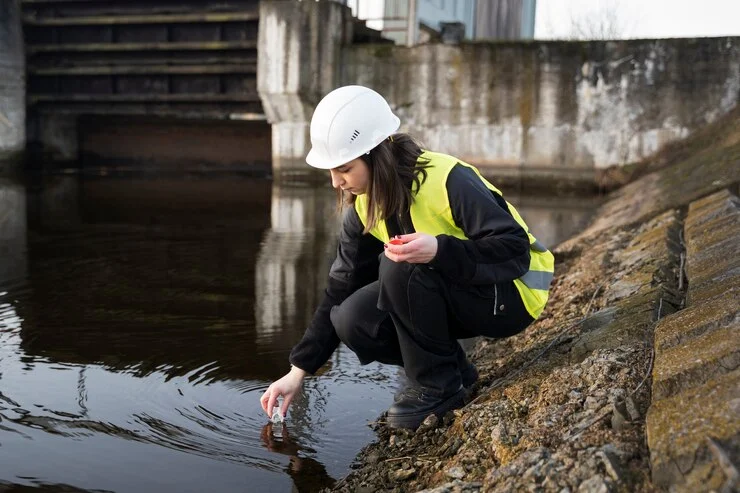The threat of flooding poses significant challenges to homeowners and businesses in various regions around the world. Logan, a city situated within the state of Queensland, Australia, is no stranger to the risks associated with flood events. As the global climate continues to change, resulting in more extreme weather patterns, flood risk management has become an essential topic for those residing in flood-prone areas. This article aims to guide property owners in Logan on how to mitigate flood risks through proactive measures.
Understanding the Flood Risk in Logan
Logan flooding is a concern that must be acknowledged by the local community and authorities. The potential for waterways to overflow during heavy rainfall is a natural occurrence that can, unfortunately, lead to property damage, economic losses, and even loss of life. Understanding the specific risks that flooding presents in the local context is the first step toward effective management.
Evaluating Your Property’s Flood Vulnerability
Evaluating the vulnerability of your Logan property is essential in planning for flood risk management. Factors such as the property’s location, the local topography, and proximity to water bodies are all determinants of flood risk. Homeowners should seek resources, such as flood maps and historical data, which can provide insights into the patterns and potential impact of flooding in their area.
Adopting Structural and Non-Structural Measures
To reduce the adverse effects of flooding, property owners can adopt a combination of structural and non-structural measures. Structural measures include the modification of buildings to prevent water ingress, such as the installation of flood barriers or the elevation of critical utility systems. Non-structural measures involve adjustments in property management practices and planning, such as the adoption of suitable landscaping that facilitates water runoff or embracing a flood-resilient design in future renovations.
Insurance and Flood Risk
Insurance plays a critical role in protecting property from the financial repercussions associated with flood events. Property owners in Logan should consult with insurance providers to ensure they have appropriate coverage for flood risks. Deductions should reflect the actual risk levels and consider the potential costs of property damage and replacement.
Community Involvement in Flood Risk Management
Flood risk management is most effective when the entire community is involved. Property owners in Logan should actively participate in local initiatives aimed at flood mitigation. These may include community workshops, the development of action plans, and coordination with local emergency services to ensure an organised response in the event of a flood.
Proactive Measures for Flood Risk Management
Beyond understanding and insuring against flood risks, proactive measures involve planning and preparation before an event occurs. Property owners should develop personal flood action plans that include steps to take when flood warnings are issued.
Regular Maintenance and Inspections
Regular maintenance of property, such as ensuring drainage systems are free from obstructions, can prevent or diminish the severity of flood incidence. Inspections of the surrounding areas for signs of erosion, water pooling, or other indicators of potential flooding should also be part of a routine property maintenance schedule.
Using Technology to Monitor Flood Risks
Advancements in technology have provided property owners with tools to better monitor flood risks. The use of online platforms and applications that track weather patterns and provide real-time flood warnings can be invaluable in preparing for potential flood events. Additionally, adopting water sensors and automatic shutoff systems can help prevent or mitigate flood damage.
Improving Drainage Solutions
Improving the drainage solutions on your property is another proactive measure that can significantly decrease flood risk. This may involve the installation of sump pumps, the creation of rain gardens, or the use of permeable paving materials, all of which help to manage and redirect excess rainwater away from your property.
Bolstering Community Defences
Beyond individual property measures, strengthening community defences against flooding is vital. This includes supporting the development and maintenance of levees, dams, and flood channels designed to protect larger areas. Engaging in local government discussions on flood risk management and expressing support for infrastructure projects can contribute to long-term flood mitigation strategies within the Logan community.
Preparing for Emergency Situations
Despite all proactive measures taken, it is crucial to be prepared for emergency situations if they arise. This involves having a readily accessible emergency kit, knowing evacuation routes, and understanding the emergency procedures outlined by local authorities. Being prepared can greatly reduce the stress and danger during flood events.
Conclusion
Flood risk management requires an integrated approach that combines understanding, planning, the adoption of practical measures, and active community participation. With the increasing incidence of Logan flooding, property owners must be vigilant and proactive in implementing strategies to safeguard their assets. The steps provided in this article are geared towards enabling residents to navigate flood risks effectively, ensuring they are well-equipped to protect their property from the potentially devastating impacts of flooding. The adage of ‘being prepared is half the victory’ holds especially true in the context of flood risk management, and with the right measures in place, Logan property owners can enhance their resilience against floods and guard their future with confidence.







